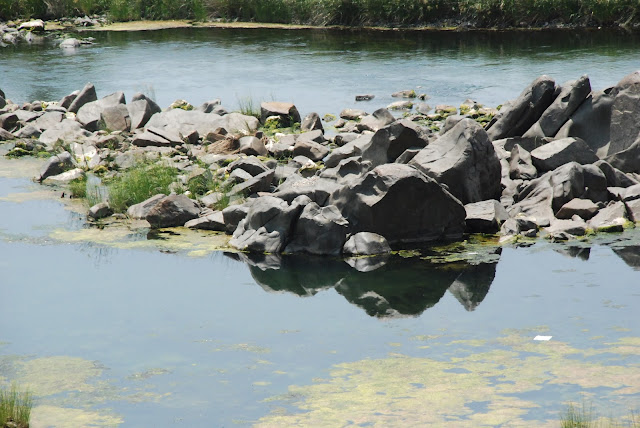Tour date: 19th September 2012
It was a day trip to Nagarjuna Sagar Dam, by road since the dam is located only about 168km from where I was staying. 19th September 2012 was a public holiday. Only the 2 of us, phani and I were enjoying a 3 hours drive to the modern dam constructed in 1955 though the British Engineers has sketched it in 1905.
The weather was hot in September month (all over Andhra Pradesh state) and I'm fully aware that I shouldn't be complaining as I had a luxury of AC vehicles if to compare with others. We used a State Highway 2, which is a quite good rood to travel though some parts were under upgrading and improvement. A much better road when comparing a route to Karnataka from Guntur.
The dam was once the World's largest stone masonry dam during it's time, which is built across Krishna River at Nagarjuna Sagar near Nalgonda district and Guntur district in the state of Andhra Pradesh. It is 150m tall and 1.6km long with 26 gates. The project was among the earliest under India's largest infrastructure of the green revolution. It helps to irrigate the farming and generate a hydro power to the nearby districts.
Nagarjuna Sagar Dam is the 3rd dam that I visited during my 21 months working/stay in India, 2011-2012. The first was a Bushi Dam in Maharashtra State located in Lonavla, visited on 18th September 2011 and second was Beas-Sutlej given a prosperity to Sundernagar, the biggest colony in Himachal Pradesh, visited on 18th December 2011.
Project construction kick-off was officially inaugurated by India first Prime Minister, Jawaharlal Nehru on 10 December 1955 and was proceeded for the next 12 years. The reservoir water was released into the left and right bank canals by Prime Minister Indira Gandhi in 1967. Construction of the hydro power plant followed, with generation increasing between 1978 and 1985, as additional units came into service.
The construction of the dam submerged an ancient Buddhist settlement, Nagarjunakonda, which was the capital of the Ikshvaku dynasty in the 1st and 2nd centuries, the successors of the Satavahnas in the Eastern Deccan. Excavations here had yielded 30 Buddhist monasteries, as well as art works and inscriptions of great historical importance. In advance of the reservoir's flooding, monuments were dug up and relocated. Some were moved to Nagarjuna's Hill, now an island in the middle of the reservoir. Others were moved to the mainland.
We drove further up to have a better view from the top of the dam and/or looking for a ferry for me to reach a Nagarjunakonda temple. Instead, we found a church monasteries was established long ago in that area. It was nice to see a rich religious culture happening in Nagonda district though it was use to be the biggest Buddhist monasteries.
Below photos were the last 2 that I snapped before we took a right turn heading back to Vijayawada and forgetting my initial plan of saying hello to Nagarjunakonda.
















No comments:
Post a Comment